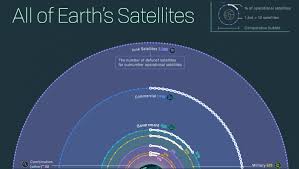
Breaking News
 GOOD BYE VENISON | Now, they're BANNING DEER FARMING and it's going to court in Minnesota.
GOOD BYE VENISON | Now, they're BANNING DEER FARMING and it's going to court in Minnesota.
 Millionaires in 1900, Billionaires Today and Trillionaires in the Future
Millionaires in 1900, Billionaires Today and Trillionaires in the Future
 Brighteon Broadcast News, Jan 9, 2026 - Mike Adams: We Are Building the Infrastructure...
Brighteon Broadcast News, Jan 9, 2026 - Mike Adams: We Are Building the Infrastructure...
 The breaking point: American farms are in crisis
The breaking point: American farms are in crisis
Top Tech News
 World's most powerful hypergravity machine is 1,900X stronger than Earth
World's most powerful hypergravity machine is 1,900X stronger than Earth
 New battery idea gets lots of power out of unusual sulfur chemistry
New battery idea gets lots of power out of unusual sulfur chemistry
 Anti-Aging Drug Regrows Knee Cartilage in Major Breakthrough That Could End Knee Replacements
Anti-Aging Drug Regrows Knee Cartilage in Major Breakthrough That Could End Knee Replacements
 Scientists say recent advances in Quantum Entanglement...
Scientists say recent advances in Quantum Entanglement...
 Solid-State Batteries Are In 'Trailblazer' Mode. What's Holding Them Up?
Solid-State Batteries Are In 'Trailblazer' Mode. What's Holding Them Up?
 US Farmers Began Using Chemical Fertilizer After WW2. Comfrey Is a Natural Super Fertilizer
US Farmers Began Using Chemical Fertilizer After WW2. Comfrey Is a Natural Super Fertilizer
 Kawasaki's four-legged robot-horse vehicle is going into production
Kawasaki's four-legged robot-horse vehicle is going into production
 The First Production All-Solid-State Battery Is Here, And It Promises 5-Minute Charging
The First Production All-Solid-State Battery Is Here, And It Promises 5-Minute Charging
 See inside the tech-topia cities billionaires are betting big on developing...
See inside the tech-topia cities billionaires are betting big on developing...
Visualizing All Of Earth's Satellites: Who Owns Our Orbit?

Today, as Visual Capitalist's Therese Wood details below, there are seemingly countless benefits and applications of space technology. Satellites, for instance, are becoming critical for everything from internet connectivity and precision agriculture, to border security and archaeological study.
Space is Open for Business
Right now, there are nearly 6,000 satellites circling our tiny planet. About 60% of those are defunct satellites - space junk - and roughly 40% are operational.
As highlighted in the chart above, The Union of Concerned Scientists (UCS), determined that 2,666 operational satellites circled the globe in April of 2020.
Over the coming decade, it's estimated by Euroconsult that 990 satellites will be launched every year. This means by 2028, there could be 15,000 satellites in the skies.

 Storage doesn't get much cheaper than this
Storage doesn't get much cheaper than this

